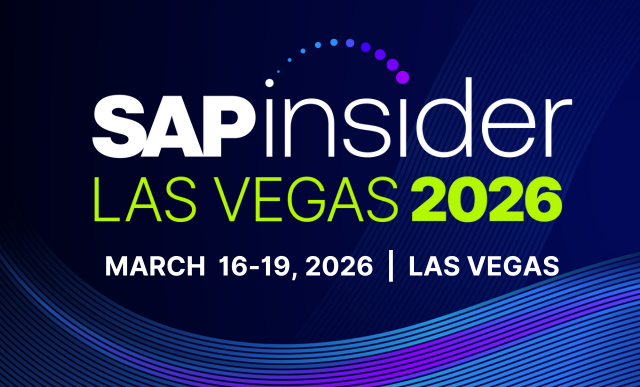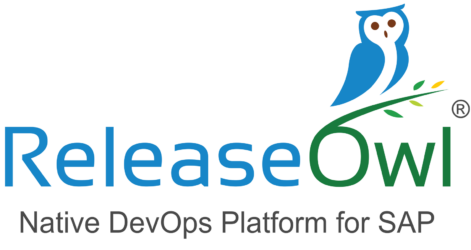SAP Simulation
Filter By
Browse By
- SAP Analytics and AI
- SAP Application Development and Integration
- All SAP Application Development and Integration
- SAP ABAP
- SAP ABAP Development Tools
- SAP ABAP Test Cockpit
- SAP API Management
- SAP BAPI
- SAP Basis
- SAP BRF
- SAP Business Application Studio
- SAP CMS
- SAP Design Studio
- SAP Development Tools
- SAP DevOps
- SAP EAI
- SAP EDI
- SAP Extension Suite
- SAP Fiori
- SAP Fiori Elements
- SAP Integration Suite
- SAP Low Code Application Development
- SAP Low Code Automation
- SAP Netweaver
- SAP Release Management
- SAP UI5
- SAP Web Application Server
- SAP Web IDE
- SAP Business Process Management
- SAP Center of Excellence
- SAP CIO
- SAP Customer Experience
- SAP Data and Data Management
- All SAP Data and Data Management
- SAP BW
- SAP BW/4HANA
- SAP Crystal Reports
- SAP Data Archiving
- SAP Data Center
- SAP Data Governance
- SAP Data Integration
- SAP Data Migration
- SAP Data Quality
- SAP Data Services
- SAP Data Strategy
- SAP Data Visualization
- SAP Data Warehouse Cloud
- SAP DMS
- SAP Document Control
- SAP EIM
- SAP ETL
- SAP ETL Tools
- SAP HANA
- SAP HANA Administration
- SAP HANA Deployment Infrastructure
- SAP HANA Studio
- SAP Master Data
- SAP Master Data Governance
- SAP MDM
- SAP Enterprise Architect
- SAP Enterprise Asset Management
- SAP ERP
- SAP Finance
- All SAP Finance
- SAP Accounting
- SAP AR AP
- SAP Asset Accounting
- SAP Billing Systems
- SAP BPC
- SAP BRIM
- SAP Cash Management
- SAP Central Finance
- SAP Controlling
- SAP COPA
- SAP Cost Center Accounting
- SAP Currency Risk
- SAP e-invoicing
- SAP FICO
- SAP Finance Automation
- SAP Advanced Financial Closing
- SAP Financial Consolidation
- SAP Financial Planning
- SAP FX Risk
- SAP General Ledger
- SAP Global Tax Management
- SAP Hyperion
- SAP Order to Cash
- SAP Payment Processing
- SAP Profitability Analysis
- SAP Rebate Management
- SAP S/4HANA Finance
- SAP SWIFT Compliance
- SAP Treasury Management
- SAP Universal Journal
- SAP Governance Risk and Compliance
- SAP Human Capital Management
- SAP Intelligent Technologies
- SAP Platform and Technology
- All SAP Platform and Technology
- SAP Business Technology Platform
- SAP Cloud
- SAP Cloud Connector
- SAP Cloud Integration Platform
- SAP Cloud Migration
- SAP Cloud Platform
- SAP Cloud Providers
- SAP Cloud Strategy
- SAP Digital Signature
- SAP Container Platform
- SAP HANA Enterprise Cloud
- SAP Digital Asset Management
- SAP Smart Forms
- SAP HEC
- SAP Digital Integration Hub
- SAP Hyperscalers
- SAP Infrastructure
- SAP Messaging
- SAP Quality and Testing
- SAP Security
- SAP Spend Management
- SAP Supply Chain Management
- All SAP Supply Chain Management
- SAP APO
- SAP Asset Management
- SAP Business Network
- SAP Digital Manufacturing Cloud
- SAP Digital Twin
- SAP EWM
- SAP IBP
- SAP Inventory Management
- SAP Label Printing
- SAP Logistics
- SAP Manufacturing
- SAP Manufacturing Automation
- SAP MES
- SAP MII
- SAP MM
- SAP MRO
- SAP MRP
- SAP Order Management
- SAP Plant Maintenance
- SAP PLM
- SAP Production Planning
- SAP S&OP
- SAP SD
- SAP SPM
- SAP Supply Chain Planning
- SAP Track and Trace
- SAP Transportation Management
- SAP System Administration
What is Simulation?
Simulation modeling is the capability to leverage analytics and digital tools to help answer “what-if” questions in the business context. These tools help you evaluate the impact of business decisions on your business processes and may help you select the most optimal decision. An example may be manufacturing scheduling. A simulation modeling tool can help you evaluate the impact of various scheduling approaches on manufacturing cycle time.
What is Simulation?
Simulation modeling is the capability to leverage analytics and digital tools to help answer “what-if” questions in the business context. These tools help you evaluate the impact of business decisions on your business processes and may help you select the most optimal decision. An example may be manufacturing scheduling. A simulation modeling tool can help you evaluate the impact of various scheduling approaches on manufacturing cycle time.
Simulation tools often help evaluate recommendations from other analytics approaches like optimization, without implementing those recommendations in the real-world. The three most widely used process simulation modeling types are:
- System dynamics
- Discrete event modeling
- Agent-based modeling
Simulation Technologies Available in the SAP World
Process simulation modeling tools have been leveraged extensively in SAP technology ecosystem. An example is SIMUL8, which is a flow simulation program that can help you visualize your process flows, understand the bottlenecks, and evaluate the impact of change in parameters on the process. As far as non-SAP process simulation modeling solutions are concerned, all leading simulation software tools like AnyLogic and Simio integrate well with SAP environments.
Key Considerations for SAPinsiders
Understand the methods and process alignment. The choice of method that should be used is based on the system being modeled and the purpose of the model. It is therefore critical to understand which specific simulation method will be a good fit. This is important from the perspective of tools being leveraged since some tools have more coverage and use cases in certain methods.
Define the level of abstraction of the process model. This is where you define how detailed your model needs to be. Remember that this depends on the modeling objective. As an example, if you are trying to gain an understanding of the cycle time of a product flow across the supply chain, you do not need to model individual processes within a manufacturing location. But if your simulation model is going to focus on the impact of changeover time on a manufacturing line, you may have to model the entire line flow in detail.
Think about integration with tools like business process intelligence (BPI). Note that the majority of BPI tools already do a good job of capturing process flow and building a model from that flow. Not all of them, however, offer simulation capabilities and those that do may not have the features a standalone pure simulation tool or module may offer. By strategically integrating a simulation tool with a BPI tool, you can create a solution that takes your process management capabilities even further.
423 results
-

Take SAP Business Warehouse Benchmarking to the Next Level
Reading time: 8 mins
As a staple of many SAP customer landscapes, SAP Business Warehouse (SAP BW) needs to perform at an optimal level at all times. That is why SAP provides standard application benchmarks to help its customers measure application performance, including SAP BW performance. However, rapid and ongoing changes — such as increasingly complex queries and data…
-

Support for Connected Products Begins with Design
Reading time: 8 mins
With demand for customized products growing each day, and the Internet of Things (IoT) enabling real-time insight into smart, connected products, product designers are facing a new world of research and development (R&D). Not only must products provide ongoing usefulness to the customer, they must inform R&D on how to make any necessary adjustments to…
-

Navigating the Digital Transformation Journey with SAP S/4HANA
Reading time: 9 mins
The pace of innovation is fast, and it’s only getting faster. As technology continues to change every aspect of daily life, including the way businesses operate, organizations need to digitize to succeed. SAP S/4HANA provides companies with a proven path toward the digital transformation they need to keep up with the pace of innovation. Learn…
-
-

The Next Level of Planning Processes
Reading time: 3 mins
While organizations often know what they would like to change in their current processes — and which software will best help them — they can be hesitant about going forward with a new implementation. Upsetting old processes, dealing with data migration challenges, and user resistance to change can seem daunting. In this article, learn how…
-

Take Control of Mergers and Acquisitions
Reading time: 8 mins
As businesses pursue growth in the digital age, there has been an uptick in the rate of mergers and acquisitions (M&As). While M&As help organizations expand their capabilities and extend new offerings to their customers, they also bring unique challenges — organizations must work hard to integrate IT systems and obtain a single source of…
-

Connecting All Parts of the Supply Chain
Reading time: 6 mins
In the past, supply chain technology revolved around traditional, on-premise ERP systems supported by siloed applications. While this model worked well for years, it is no longer sufficient with market trends such as e-commerce, omnichannel retail, and the Internet of Things (IoT) driving the need for an agile, digitized supply chain. Discover how an SAP…
-

Discover the Tools for Running a Live Business
Reading time: 2 mins
IT professionals have been hearing a lot about what they need to do to embrace digital transformation, from obtaining real-time insights to becoming a “live business.” To accomplish these goals, however, professionals often need to learn new skills, discover new technologies, or discuss innovative strategies with their peers. This article looks at how the resources…
-
-

Streamline Budgeting and Planning with Accurate, Timely Data
Reading time: 2 mins
Successful planning and budgeting requires insights based on accurate data. Gaining this insight can be difficult, however — organizations often rely on outdated processes that do not deliver timely, accurate insights. Discover how a business planning approach that focuses on consolidating data, modeling forecasts, and automating budgets can help you develop reliable reports and improve…
-

Harness IoT and Big Data to Break Down Silos in Manufacturing
Reading time: 13 mins
In a digital supply chain, design, manufacturing, asset management, and finished products all come together in an uninterrupted, real-time loop to meet customer expectations for immediacy and customization. To achieve this, formerly siloed domains and processes must come closer together and become agile enough to meet individual demands. Learn how product design, manufacturing, and asset…
-

Comprehensive Identity and Access Management in the Cloud
Reading time: 8 mins
Digital technologies are transforming enterprise system landscapes, bringing with them a range of security issues businesses must address — particularly when it comes to managing user identities and access to business solutions. To address these challenges, businesses require a comprehensive, unified, centralized approach to identity management and access governance. This article introduces SAP Cloud Identity…
Become a Member
Unlimited access to thousands of resources for SAP-specific expertise that can only be found here.
Become a Partner
Access exclusive SAP insights, expert marketing strategies, and high-value services including research reports, webinars, and buyers' guides, all designed to boost your campaign ROI by up to 50% within the SAP ecosystem.
Upcoming Events
Related Vendors
Your request has been successfully sent


